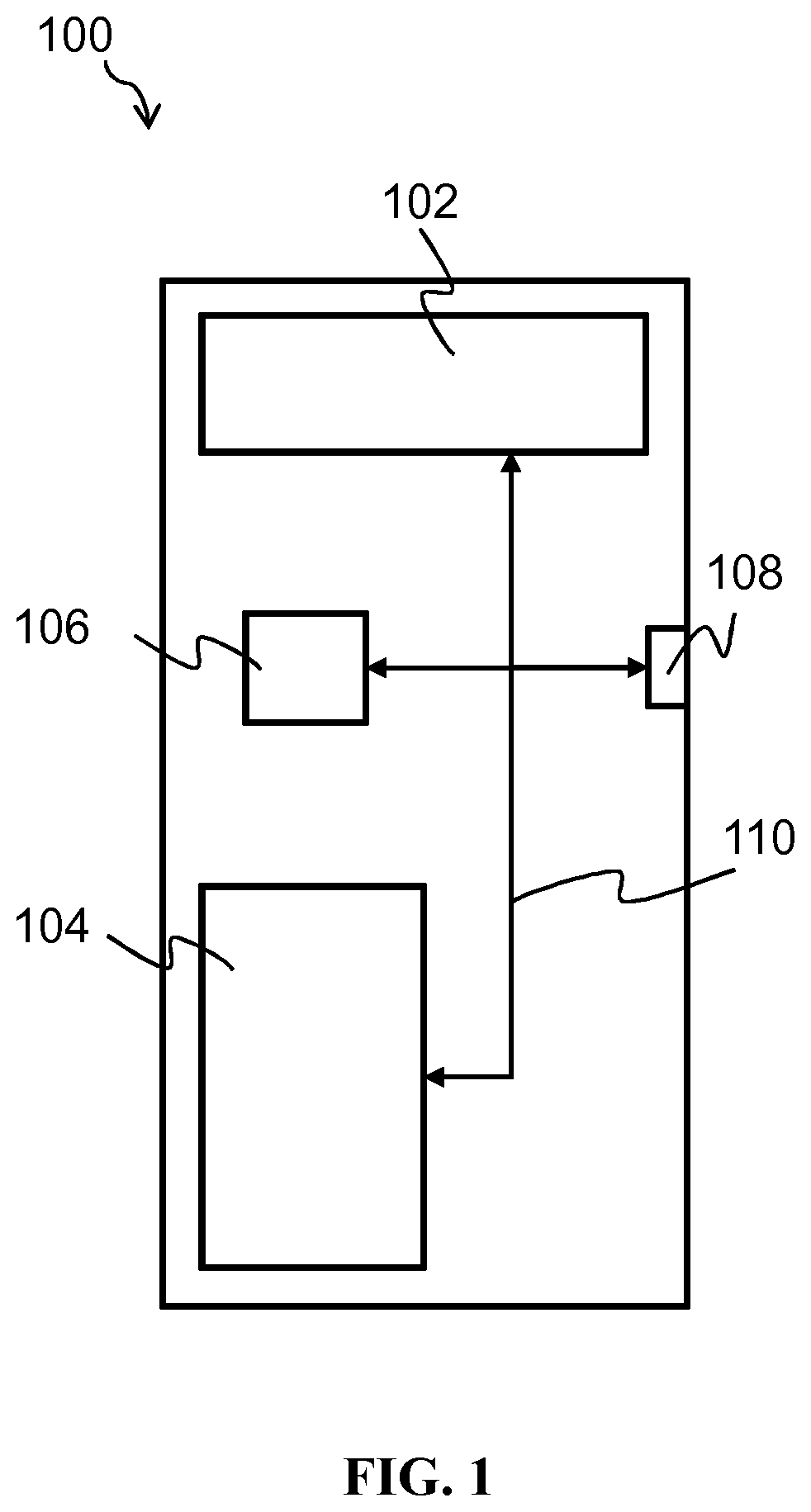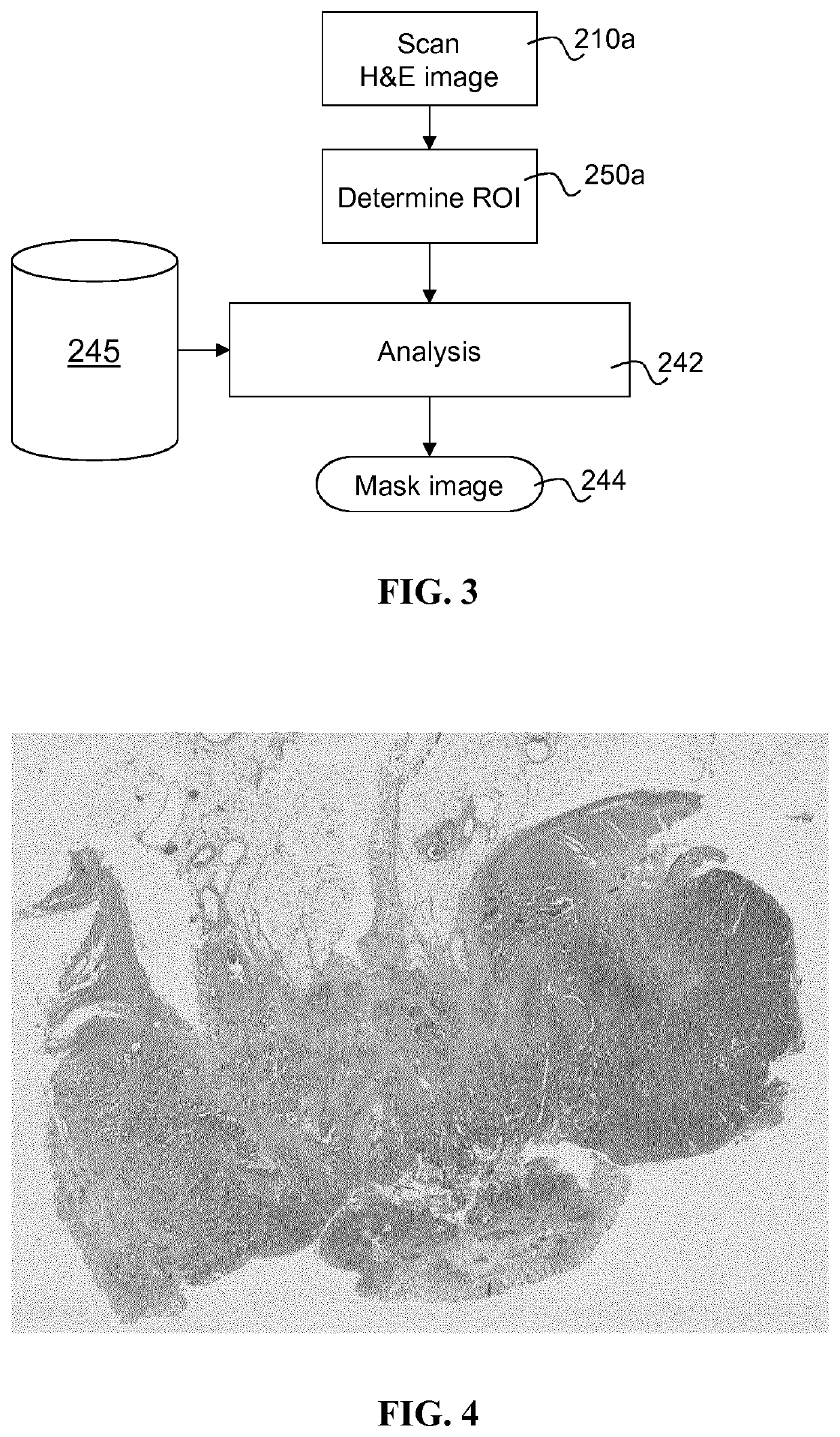Histopathological image analysis
a histopathologist and image technology, applied in the field of histopathological image analysis, can solve the problems of difficult or impossible for a histopathologist to many features of interest are still difficult or impossible for a histopathologist to see or accurately quantify with h&e staining, and the ihc technique may be expensive, time-consuming, and/or difficult to implement. achieve the effect of convenient, quick and easy us
- Summary
- Abstract
- Description
- Claims
- Application Information
AI Technical Summary
Benefits of technology
Problems solved by technology
Method used
Image
Examples
Embodiment Construction
[0082]FIG. 1 of the accompanying drawings schematically illustrates an exemplary computer system 100 upon which embodiments of the present invention may run. The exemplary computer system 100 comprises a computer-readable storage medium 102, a memory 104, a processor 106 and one or more interfaces 108, which are all linked together over one or more communication busses 110. The exemplary computer system 100 may take the form of a conventional computer system, such as, for example, a desktop computer, a personal computer, a laptop, a tablet, a smart phone, a smart watch, a virtual reality headset, a server, a mainframe computer, and so on. In some embodiments, it may be embedded in a microscopy apparatus, such as a virtual slide microscope capable of whole slide imaging.
[0083]The computer-readable storage medium 102 and / or the memory 104 may store one or more computer programs (or software or code) and / or data. The computer programs stored in the computer-readable storage medium 102 ...
PUM
| Property | Measurement | Unit |
|---|---|---|
| fluorescence | aaaaa | aaaaa |
| microscopic structure | aaaaa | aaaaa |
| transparent | aaaaa | aaaaa |
Abstract
Description
Claims
Application Information
 Login to View More
Login to View More - R&D
- Intellectual Property
- Life Sciences
- Materials
- Tech Scout
- Unparalleled Data Quality
- Higher Quality Content
- 60% Fewer Hallucinations
Browse by: Latest US Patents, China's latest patents, Technical Efficacy Thesaurus, Application Domain, Technology Topic, Popular Technical Reports.
© 2025 PatSnap. All rights reserved.Legal|Privacy policy|Modern Slavery Act Transparency Statement|Sitemap|About US| Contact US: help@patsnap.com



